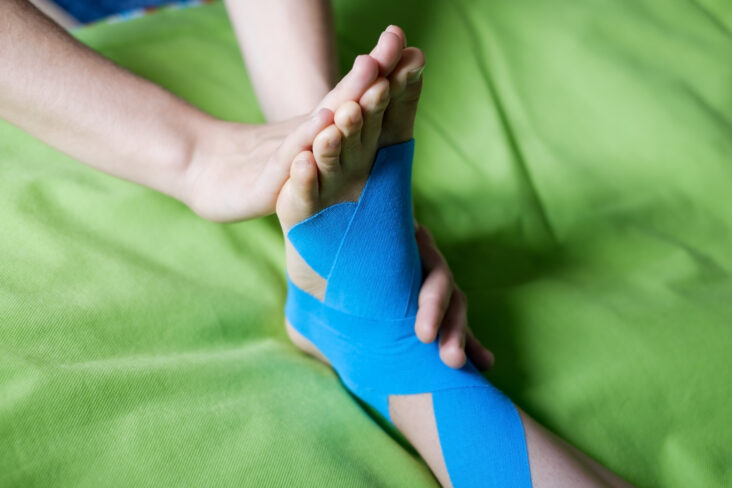Discovering the “Magic Tape”
I’ve had lots of questions about the “magic tape” that my patients have seen on Olympians, local high school athletes, their neighbor’s back and Grandma’s knees. I, too, was critical when introduced to this kinesiology tape. I thought it was a fashion statement for athletes in crazy colors and designs like a temporary tribal tattoo. Once I learned the potential benefits of this tape, I decided to train in using it and to use the tape in case studies.
Rocktape
I typically use a type of kinesiology tape called Rocktape, which I like because it seems to stick very well even for swimmers and those with oily skin. I love having the kinesiology tape as a tool to use to help patients heal. The Rocktape.com website states that the tape “reduces muscle fatigue” and “promotes blood flow for faster recovery.” The tape is used to help with proper biomechanical motion and can stimulate or inhibit muscles that are imbalanced. When applied correctly, kinesiology tape acts as “compression or decompression and relieve pain and swelling.”
Research and Testing
After researching it and using it on my patients, I found it to be very beneficial. It turns out that not only was I seeing results, people were coming back and asking for more of the “magic tape.” Patients with knee pain exacerbated during long walks due to instability were now able to walk the whole mall with little to no pain. The tape also helped with lymph drainage as I saw when the bruises from a sprained ankle I taped diminished compared to the areas where I had not applied the tape. Pregnant women with unstable low back joints were raving about the tape. I couldn’t deny that patients were seeing results and improving in their activities of daily living faster with a combination of adjustments and tape.
Benefits and Treatment
- Who can benefit from tape? Everyone will benefit from taping. If it hurts, tape it. If it’s a new sprain or chronic injury, tape it. The tape is latex-free and the adhesive is hypoallergenic. Most people can wear the tape with no problem.
- What conditions can be treated?
- Lower back pain
- Plantar fasciitis
- Shoulder impingement
- Postural imbalances
- Ankle and wrist sprains
- IT band tendonitis
- Patellar (knee cap) tracking
- Upper back posture
- Tennis elbow
- Uncomfortable pregnancy tummies.
- Many more
- How long does the tape last? The tape holds for three to five days depending on the patient’s skin. You’re able to shower, swim and resume activities as normal with the tape in place. It doesn’t restrict movement, so most people forget they’re wearing it.
- Where should I get taped? Right here in our clinic! Dr Ashlin has had specialized training in taping. It’s not just Chiropractors that are trained and using taping many other health care professionals, such as physical therapists, physical trainers or sports therapists may also be trained in the application of kinesiology tape.

